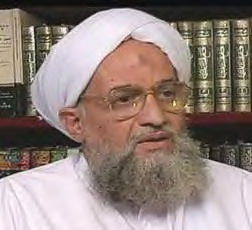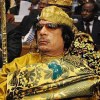![]()
Sun, June 19, 2011 | The Meir Amit Intelligence and Terrorism Information Center
The Muslim Brotherhood – Chapter 12: Islamic jihadist organizations in Egypt ideologically originating in the Muslim Brotherhood
The Muslim Brotherhood is an Islamic mass movement whose worldview is based on the belief that “Islam is the solution” and on the stated aim of establishing a world order (a caliphate) based on Islamic religious law (Shariah) on the ruins of Western liberalism. With extensive support networks in Arab countries and, to a lesser extent, in the West, the movement views the recent events in Egypt as a historic opportunity. It strives to take advantage of the democratic process for gradual, non-violent progress towards the establishment of political dominance and the eventual assumption of power in Egypt and other Middle Eastern countries.
Overview
From the 1970s to the late 1990s, militant Islamic groups in Egypt posed the greatest challenge to the regime in terms of internal security. The number of groups was estimated at several dozens, the largest and most important being Al-Jama’ah al-Islamiyya and Al-Jihad.[82] Some of them splintered from the Muslim Brotherhood due to differences of opinion over the means to achieve the goal of turning Egypt into an Islamic Sharia state and apply Islamic religious law to all spheres of life. Other groups were ideologically and organizationally inspired by the Muslim Brotherhood and its leaders.
The ideology of the Islamic groups is based on accusing the regime of heresy against Islam (takfir). Within militant Islam there are two conflicting ideological approaches for achieving the goal of establishing a Muslim state and society:
a. Jihad — waging a holy war against the regime until the goal is achieved, including a violent struggle against the leaders and branches of the regime to topple it. This approach is followed by the two leading organizations, Al-Jama’ah al-Islamiyya and Al-Jihad al-Islami.
b. Al-Takfir wal-Hijra — like the regime, the society is also corrupt and rotten, and is also to blame for the current social situation. Accordingly, it is the believers’ duty to work against the infidel society, seceding from it physically and living a true Islamic life while advancing the collapse of the regime and the society. Following the collapse, the believers must assume leadership and establish a pure and just Islamic society. Until then, the believers are forbidden to mingle in society, take part in elections, or serve in government positions.
The different groups strongly oppose the West in general and Israel and the Jews in particular, believing they are largely to blame for the decline of Islam in the modern era. However, resistance to the West and Zionism is not the first priority of the groups — in their view, the war on Israel will be launched after first disposing of the Egyptian regime, their main enemy.
Al-Jama’ah al-Islamiyya
Al-Jama’ah al-Islamiyya is the largest and most active radical Islamic organization operating in Egypt. It was established in the late 1960s as a student organization affiliated with the Muslim Brotherhood. In the mid-1970s it splintered from the Muslim Brotherhood over differences of opinion, as it considered that organization to be too moderate in its approach towards the regime. It became institutionalized in the late 1970s and in the early 1980s formed a military wing for violent terrorist attacks. Its ties to Al-Jihad grew closer at the time, and the two organizations cooperated fully with each other, including in the assassination of President Sadat in 1981 (the assassination itself was carried out by Al-Jihad, while Al-Jama’ah al-Islamiyya simultaneously attacked the security department in Asyut, killing dozens of police officers). The cooperation between the two organizations decreased following Sadat’s assassination due to disputes between their leaders.
The organization consisted of various subordinate groups in the areas of Egypt where it operated, particularly in Upper Egypt (Asyut, Qana, Al-Minya), Cairo slums (particularly Imbaba, Ain Shams, and Giza), and Alexandria. According to estimates, the organization numbered thousands to tens of thousands of activists, and had a structure similar to that of the Muslim Brotherhood (spiritual leader, Shura Council, a central leadership acting as a “government” in charge of various issues, and a similar province-level organizational structure under the central leadership). The organization’s supreme leadership body is the Shura Council, consisting of few activists (some abroad and others detained in Egypt). The council is the organization’s “external leadership”. While the “inside leadership” is limited in its ability to direct the organization’s operative and routine activities from prison, its members’ opinions count more when it comes to issues of religious law and the organization’s strategic course of action.
The organization’s most prominent figure is Sheikh Omar Abdel-Rahman, its spiritual leader. Abdel-Rahman is a blind cleric with a Ph.D. in religious law from Al-Azhar University, who was influenced by the writings of Ibn Taymiyyah and Sayyid Qutb at an early age. During his studies in Al-Azhar he met Abdullah Azzam (see below), and they became close friends in the 1980s. According to a study conducted by the British Adrian Morgan on the Muslim Brotherhood, Abdel-Rahman came to the U.S. with the assistance of two Muslim Brotherhood activists, Mahmoud Abu Halima and Mustafa Shalabi (Abu Halima was sentenced to 20 years in prison for involvement in the World Trade Center bombing;[83] he is currently serving a life sentence in the U.S. for involvement in planning and carrying out the first World Trade Center bombing on February 26, 1993).
Other important personalities:
a. Mustafa Ahmed Hassan Hamza — chairman of the organization’s Shura Council.
b. Muhammad Mukhtar Jum’ah al-Muqri’ — member of the Shura Council.
c. Sheikh Abd al-Akhir — member of the Shura Council.
Major terrorist attacks committed by the organization: assassination of the People’s Assembly speaker in 1990; attempted assassination of the information minister in 1993; assassination of the anti-fundamentalist ideologue and journalist Farag Foda in 1992; attacks against Egypt’s foreign tourism, Copts (assassinations, torching houses and businesses) and security forces (mainly police officers, including high-ranking ones). On several occasions the organization proved its ability to carry out strategic “showcase” terrorist attacks: attempted assassination of President Mubarak in Addis Ababa in 1995, blowing up a car bomb in Croatia in 1995, and a terrorist attack against tourists in Luxor in 1997, where 58 people were killed.
Following the regime’s major success in fighting the organization, both in Egypt and elsewhere, starting in July 1997 its detained leaders made several statements calling for a ceasefire in their activities against the regime. In March 1999 the organization’s external leadership also accepted the initiative as a tactical measure. Ever since the organization remained committed to the announcement since it was made.
Beginning in 2002, the detained inside leadership worked to achieve recognition of the ceasefire not as a temporary tactical measure but rather as a permanent strategic choice (organization members even apologized for past crimes) by all of its members, including the more radical external leadership. On its part, the regime provides the inside leadership with such incentives as releasing prisoners, while taking an aggressive stance towards the external leadership and making efforts to have the free activists extradited and brought to trial. The inside leadership currently condemns all terrorist activities and complies with the regime, even against the Muslim Brotherhood.
Al-Jihad al-Islami
Al-Jihad al-Islami was established in 1975. Upon its exposure by the regime in 1978, its members were arrested and the organization was disbanded. In 1978-1979, the organization was reestablished and became at the time the largest and most powerful of its kind in Egypt at the time. Al-Jihad was exposed once again after the assassination of President Sadat. Some of its leaders were executed; others were imprisoned or put under police surveillance. It was a hard blow for Al-Jihad to recover from, and it therefore went from being a major militant organization to the second largest organization (after Al-Jama’ah al-Islamiyya).
In the early 1990s, Al-Jihad al-Islami was reorganized in Pakistan under the initiative and leadership of Dr. Ayman al-Zawahiri, who was at the time Al-Qaeda leader Osama Bin Laden’s second-in-command. As part of the plans, the organization established a military headquarters in Afghanistan. The organization’s activity at the time focused on building an operative network of underground cells in Cairo, Alexandria, and the Delta region. The several cells established were involved in the acquisition of weapons, preparation of a network of safe houses and weapons storages, training, collecting intelligence for operations, self-funding, and planning of bold showcase operations (such as assassinations of senior regime figures).
The organization consisted of the Founding Council, the supreme wing (whose different committees each supervised specific aspects of its activity), and the Shura Council, apparently as a coordinating body involved in fundraising and scouting for training locations. The organization had ties (such as funding and training) with elements outside of Egypt: Sudan, Iran, and Afghanistan (members of the organization took part in fighting against the U.S.S.R. as part of their military training course). Its operatives resided in various Arab countries and were involved in fundraising also in European countries.
The organization’s major leaders:
a. Ayman al-Zawahiri, arrested after Sadat’s assassination, relocated to Pakistan upon release and later became Al-Qaeda’s number two.
b. Aboud al-Zumour, its military leader, arrested after Sadat’s assassination and put in prison for an extended period of time.
The organization consisted of thousands of active members. Apparently, the organization focused on violent activity, while propaganda and preaching played a less prominent role. It operated mostly in Upper Egypt (particularly Asyut and Beni Suef) and the slums of Cairo (particularly Imbaba, Ain Shams, and Giza). The organization’s showcase terrorist attacks include assassination attempts on the prime minister (December 1993) and the interior minister. The organization also committed “simpler” terrorist attacks (shooting and throwing grenades, setting explosive charges, and attacks on the Coptic minority, police officers, security personnel, and tourists). Al-Jihad’s aim was apparently to compete with the appeal and exposure gained by Al-Jama’ah al-Islamiyya for carrying out similar attacks).
Al-Jihad al-Islami’s modus operandi exhibited perseverance, careful planning and operative intelligence collection, integration of operatives from various countries, and strict field security, communications security, and compartmentalization. Thus, the organization’s cells in Egypt consisted of a large number of independent squads called tala’e al-fath (pioneers of victory, the name of Al-Zawahiri’s organization established outside of Egypt), each with few operatives. Each unit trained for specific tasks, limited in their scope. In case of a larger, more complex terrorist attack, the organization’s leader would assign different components of the mission to the various units while maintaining absolute secrecy.
The regime was able to land a serious blow on the organization’s infrastructure in Egypt and detain many key operatives, forcing it to move the bulk of its infrastructure and operations out of Egypt. In this context, it created a worldwide network of cells in countries such as Afghanistan, Lebanon, Syria, Saudi Arabia, Jordan, Sudan, Chechnya, the U.S., Canada, Britain, Germany, the Netherlands, and elsewhere. As the organization relocated its infrastructure abroad, and in light of the difficult situation in which it found itself, it tightened its cooperation with Osama Bin Laden’s Al-Qaeda until finally joining it in February 1988, committing itself to that organization’s goals and activity.
In 2000, the organization’s leadership called to “cease all hostilities against Egypt and focus on the main objective — a holy war for the liberation of the Al-Aqsa Mosque”. While the initiative gained increasing support from the detained inside leadership and was encouraged by the regime, which publicly took positive measures towards the organization and released hundreds of its operatives, Al-Jihad’s outside leadership persisted with the same kind of operative terrorist activity as before the initiative.
In 2001, Ayman al-Zawahiri announced that his organization had decided to cease anti-regime activities, but stressed the need to continue terrorist attacks against Western targets. The organization’s leadership condemned the terrorist attacks carried out in Egypt in recent years, announcing that Al-Jihad intended to launch an initiative to stop the violence, similarly to Al-Jama’ah al-Islamiyya. However, it appears that the organization believes that the initiative can only be launched once Egypt has implemented political reforms, guaranteed civil rights, and given the organization’s members their political rights immediately upon their release.
Al-Takfir wal-Hijra
The organization was established in 1971 and carried out violent activities in the late 1970s and early 1980s, although its low-profile operations continued for several years afterwards. According to an announcement released by the Interior Ministry in 1989, the authorities exposed a secret radical organization established by Al-Takfir wal-Hijra members with Iranian supervision and funding. In December 1992, the Egyptian interior minister defined Al-Takfir wal-Hijra as one of the two most dangerous organizations in Egypt.
According to the organization’s ideology, the believers must relocate to an isolated place, preferably a desert, to reestablish an authentic Muslim society while waiting for the collapse of the rotten society and its regime, and then take over the country and establish a true Islamic society. In various periods the organization was able to realize this worldview and established small, isolated communities in Egypt’s western desert and on the outskirts of cities.
The organization’s principles dictate that no member can submit to a ruler, and that loyalty and obedience are reserved only for God. It considers those who belong to another Muslim group to be infidels, even if they do follow the precepts of Islam. It therefore set penalties (including the death penalty) on seceding members. The organization allows only its own members to exercise the principle of ijtihad (religious ruling based on personal judgment) to reject rulings made after Muhammad, denying all other Muslims the same right.
The organization’s most prominent leader and founder was Shukri Mustafa, considered its general commander (al-amir al-‘aam), executed in the late 1970s. The organization conducted its activities through various cells across Egypt, keeping them as compartmentalized as possible. At its height, it numbered thousands of activists, particularly young people from the urban lower-middle class. Its funding came from donations of members and supporters in Egypt and elsewhere. One of its most notable terrorist attacks was the abduction and murder of the endowment minister in 1977.
Major Al-Qaeda members who got their start in the Muslim Brotherhood
Two major Al-Qaeda members formerly rooted in the Muslim Brotherhood:
a. Dr. Abdullah Yousef Mustafa Azzam
1) Palestinian, from the village of Silat al-Harithiya, near Jenin. Al-Qaeda’s former ideologue and Osama Bin Laden’s spiritual guide. Still viewed as a role model by Hamas. His teachings emphasized the significance of jihad (war on the infidels) as a personal duty shared by all Muslims. He fought against the Soviets in Afghanistan and died when a bomb exploded in his car in Peshawar, on November 24, 1989.
2) The roots of his ideology can be traced back to the Muslim Brotherhood. He was brought up on Hassan al-Banna’s teachings, and established a Muslim Brotherhood cell in his home town when he was a teenager. He was later influenced by other Muslim Brotherhood ideologues, including Sayyid Qutb. During his studies in Damascus, his stay in Jordan, and his studies at Cairo’s Al-Azhar University, he had contact with the movement’s activists and took part in its activities. While in Egypt, he made friends with the families of Sayyid Qutb and Hassan al-Hudaybi, the former general guide of the Egyptian Muslim Brotherhood, and the blind sheikh Omar Abdel Rahman. He later became more extremist, to the point of publicly challenging the Arab regimes.[84]
b. Ayman al-Zawahiri: Al-Qaeda leader Osama Bin Laden’s second-in-command. Joined the Muslim Brotherhood when he was 14, and at a young age decided to turn Sayyid Qutb’s vision of an Islamic government into reality. Qutb was executed by the Nasser regime one year later, and Al-Zawahiri, together with other students, established a cell to topple the Egyptian regime and establish an Islamic government. He joined the Egyptian Islamic Jihad organization and was one of its key members and later on became its leader. He was arrested following Sadat’s assassination, charged with possession of arms, and sentenced to three years in prison.[85] After his release, he moved his focus of activities outside of Egypt (Pakistan, Afghanistan, Sudan and Yemen).
This comprehensive analysis of the Muslim Brotherhood (by ITIC) consists of 12 chapters. All 12 chapters are listed below:
Chapter 1: The historical evolution of the Muslim Brotherhood in Egypt
Chapter 2: The ideology of the Muslim Brotherhood
Chapter 3: The Muslim Brotherhood’s education, preaching, and social activity
Chapter 4: The structure and funding sources of the Muslim Brotherhood
Chapter 6: The Muslim Brotherhood’s stance on the Palestinian-Israeli conflict
Chapter 7: The development of political discourse in the Muslim Brotherhood and the 2007 election platform
Chapter 8: Profiles of prominent Muslim Brotherhood figures in Egypt
Chapter 9: The Egyptian Muslim Brotherhood’s ties to its branches in Middle Eastern and Western countries
Chapter 10: The Muslim Brotherhood in other Arab countries and in Europe
Chapter 11: A profile of Sheikh Dr. Yusuf al-Qaradawi
Chapter 12: Islamic jihadist organizations in Egypt ideologically originating in the Muslim Brotherhood
You can download the full study in PDF-format here
Notes:
[82] Other militant Islamic organizations that have operated in Egypt are smaller and mainly consist of groups that splintered from the organizations discussed in this part. The smaller organizations consist of Tala’e al-Fath (the name used to refer to the operational wing of Al-Jihad al-Islami which was established by Al-Zawahiri outside of Egypt), Al-Shawqiyyun (a faction which splintered from Al-Jama’ah al-Islamiyya in 1988 and is named after its founder), Al-Harakiyyun (which splintered from Al-Jihad, a local organization in Beni Suef Province), Al-Wathiqun min al-Nasr (which splintered from Al-Jihad in 1991), Al-Tawaqquf wal-Tabayyun (a faction of al-Takfir wal-Hijra), Al-Najun min al-Nar (a faction established following Al-Jihad’s breakup in the 1980s).
[83] Adrian Morgan, Muslim Brotherhood’s Long-Standing War on the West.
[84] See Asaf Maliach and Shaul Shay, From Kabul to Jerusalem: Al-Qaeda, Global Islamic Jihad and the Israeli- Palestinian Confrontation (Tel Aviv: Matar Publication, 2009), for an in-depth account of Abdullah Azzam’s life.
[85] Wikipedia



 RSS
RSS













Islamic jihadist organizations in Egypt ideologically originating in the Muslim Brotherhood | #Egypt #Islamism http://bit.ly/q1LfMu
Islamic jihadist organizations in Egypt ideologically originating in the Muslim Brotherhood | #Egypt #Islamism http://bit.ly/q1LfMu